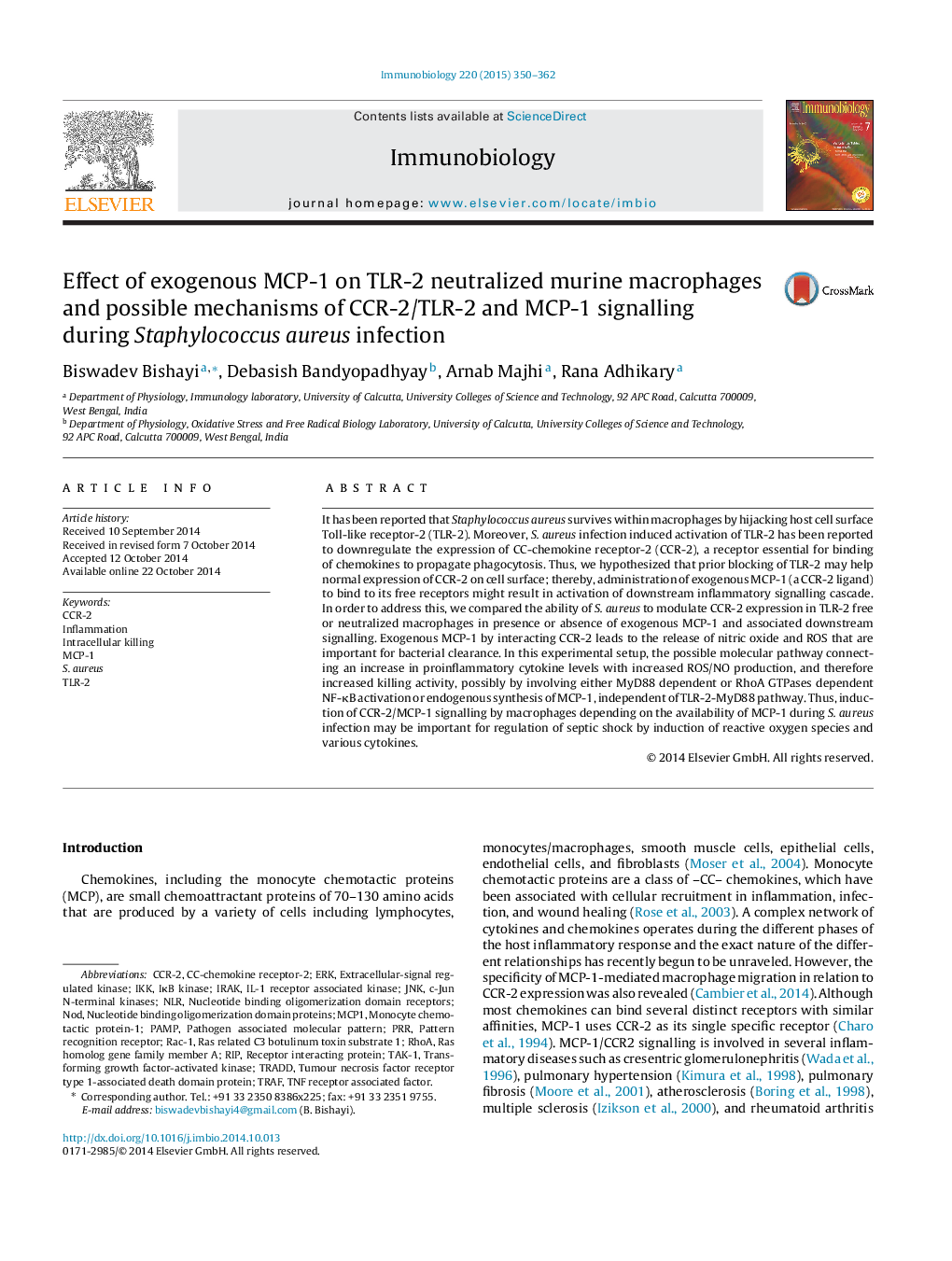| Article ID | Journal | Published Year | Pages | File Type |
|---|---|---|---|---|
| 2182859 | Immunobiology | 2015 | 13 Pages |
•Addition of exogenous MCP-1 to TLR-2 blocked macrophages regulates killing of S. aureus.•CCR-2/MCP-1 signalling during S. aureus infection depends on MCP-1.•MCP-1 augments the ability of TLR-2 neutralized macrophages by enhancing ROS and cytokines.
It has been reported that Staphylococcus aureus survives within macrophages by hijacking host cell surface Toll-like receptor-2 (TLR-2). Moreover, S. aureus infection induced activation of TLR-2 has been reported to downregulate the expression of CC-chemokine receptor-2 (CCR-2), a receptor essential for binding of chemokines to propagate phagocytosis. Thus, we hypothesized that prior blocking of TLR-2 may help normal expression of CCR-2 on cell surface; thereby, administration of exogenous MCP-1 (a CCR-2 ligand) to bind to its free receptors might result in activation of downstream inflammatory signalling cascade. In order to address this, we compared the ability of S. aureus to modulate CCR-2 expression in TLR-2 free or neutralized macrophages in presence or absence of exogenous MCP-1 and associated downstream signalling. Exogenous MCP-1 by interacting CCR-2 leads to the release of nitric oxide and ROS that are important for bacterial clearance. In this experimental setup, the possible molecular pathway connecting an increase in proinflammatory cytokine levels with increased ROS/NO production, and therefore increased killing activity, possibly by involving either MyD88 dependent or RhoA GTPases dependent NF-κB activation or endogenous synthesis of MCP-1, independent of TLR-2-MyD88 pathway. Thus, induction of CCR-2/MCP-1 signalling by macrophages depending on the availability of MCP-1 during S. aureus infection may be important for regulation of septic shock by induction of reactive oxygen species and various cytokines.
